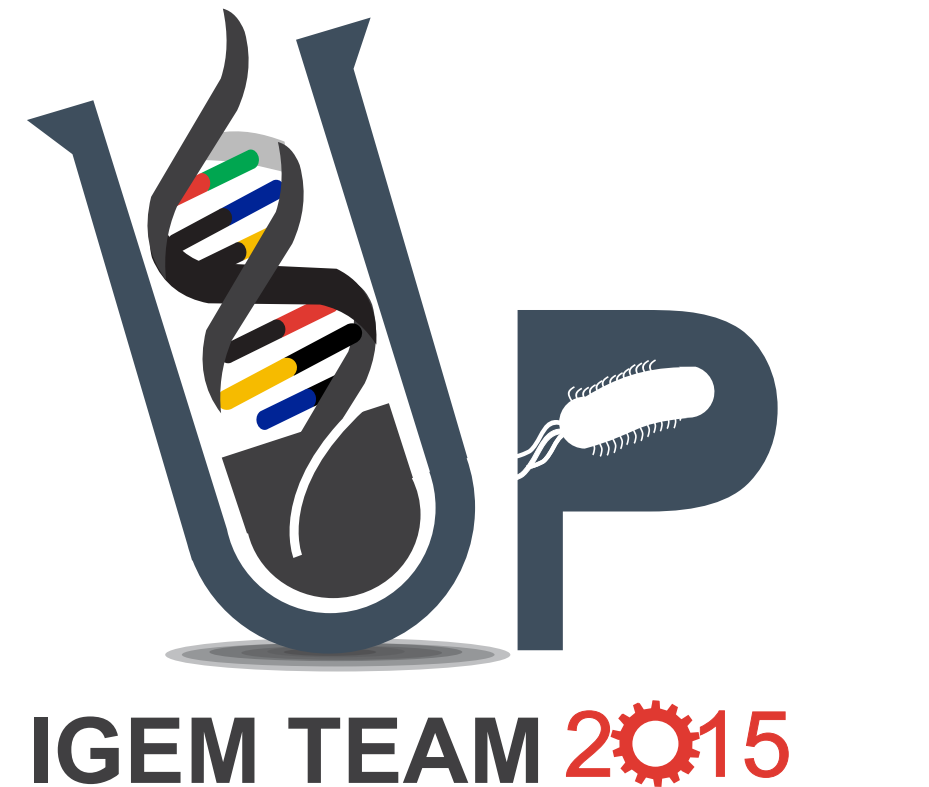Difference between revisions of "Team:Pretoria UP/Description"
| Line 1: | Line 1: | ||
{{Pretoria_UP}} | {{Pretoria_UP}} | ||
<html> | <html> | ||
| + | <head> | ||
| + | </head> | ||
| + | |||
| + | |||
| + | |||
| + | |||
| + | <body> | ||
<h2> Project Description </h2> | <h2> Project Description </h2> | ||
| Line 45: | Line 52: | ||
| + | <div id='references' style = "color: rgba(59, 57, 57, 0.28);"> | ||
| + | <p> | ||
| + | Gilbertson, L. (2003). Cre–lox recombination: Cre-ative tools for plant biotechnology. Trends in biotechnology, 21(12), 550-555. | ||
| + | <br> | ||
| + | Ghosh, K., & Van Duyne, G. D. (2002). Cre–loxP biochemistry. Methods, 28(3), 374-383. | ||
| + | <br> | ||
| + | Hoess, R. H., & Abremski, K. (1985). Mechanism of strand cleavage and exchange in the Cre-lox site-specific recombination system. Journal of molecular biology, 181(3), 351-362. | ||
| + | |||
| + | </p> | ||
| + | </div> | ||
| Line 116: | Line 133: | ||
--> | --> | ||
| − | + | </body> | |
</html> | </html> | ||
Revision as of 11:59, 6 September 2015
Project Description
Background to the Problem
Transcriptional switches form an integral part of synthetic biology. In the absence of positive feedback loops these systems are unstable since they require the maintained presence of a regulator. DNA switches based on heritable genetic modifications can allow for a permanent change in gene expression even in the absence of the initial signal. The Cre-Lox recombinase system from the P1 bacteriophage has been successfully used in genetic manipulation to excise targeted DNA fragments. Our aim is to use the Cre-Lox recombinase system to trigger a heritable genetic switch that allows for irreversible ON/OFF programming as an alternative to positive feedback loops. We are testing different approaches relying on the inversion and excision of lox-flanked DNA parts. Our long term goal is to integrate this system with signals from quorum sensing and a logic gate to program conditional chemotaxis in motile E. coli.
@TODO add both inverter and excision images side by side
Inverter Switch Mechanism
An inverter biobrick initially expresses a green fluorescent protein (GFP) marker gene from a constitutive promoter. This promoter is flanked by two Lox elements (Lox66 and Lox71) which are recognised by the Cre recombinase protein. Isopropyl β-D-1-thioglactopyranoside (IPTG) induction of a pLac promoter results in the expression of Cre which then bind to the Lox elements and mediates recombination between the two sites. This recombination changes the orientation of the Lox flanked constitutive promoter and results in a mutated Lox site which is not recognised by Cre - preventing further recombination events. The DNA segment between the Lox sites is inverted relative to the flanking DNA and thus the constitutive promoter initiates transcription for the opposite strand and the red fluorescent protein (RFP) marker gene is expressed.
Excision Switch Mechanism
A excision switch biobrick initially expresses a green fluorescent protein (GFP) marker gene from a constitutive promoter. The reporter GFP is flanked by two Lox elements, such that the Lox66 site is between the promoter and GFP start codon with the Lox71 downstream of a terminator site – insulates RFP from transcription. The Lox sites are recognised by the Cre recombinase protein. IPTG induction of a pLac promoter results in the expression of Cre which then binds to the Lox elements and mediates recombination between the two sites. This recombination results in the excision of the GFP gene and terminator. The constitutive promoter is then able to initiate transcription of the RFP reporter gene.
Characterisation
For both the recombinase switch mechanisms that are being characterised we expect to see a population of green fluorescent E. coli prior to recombination induction. After the addition of IPTG to liquid cultures we hope to observe red fluorescing bacteria in the population. As a measurement of efficiency, bacterial cell counts will be made of the numbers of cells that bave as expected.
Gilbertson, L. (2003). Cre–lox recombination: Cre-ative tools for plant biotechnology. Trends in biotechnology, 21(12), 550-555.
Ghosh, K., & Van Duyne, G. D. (2002). Cre–loxP biochemistry. Methods, 28(3), 374-383.
Hoess, R. H., & Abremski, K. (1985). Mechanism of strand cleavage and exchange in the Cre-lox site-specific recombination system. Journal of molecular biology, 181(3), 351-362.


